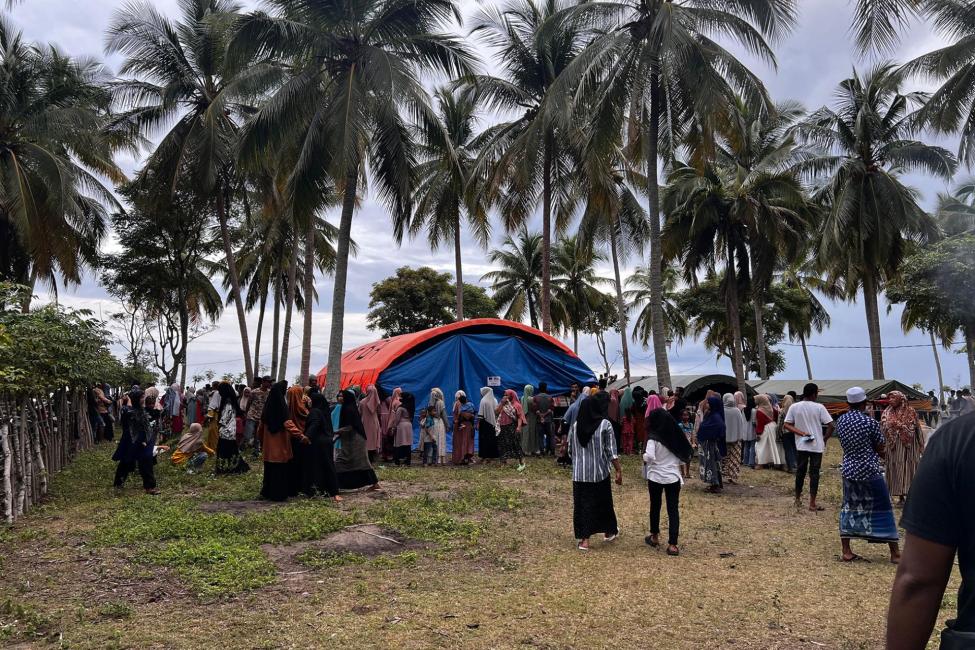-
Who we are
WHO WE AREThe International Organization for Migration (IOM) is part of the United Nations System as the leading inter-governmental organization promoting since 1951 humane and orderly migration for the benefit of all, with 175 member states and a presence in over 100 countries. IOM joined the United Nations system in September 2016.
About
About
IOM Global
IOM Global
-
Our Work
Our WorkAs the leading inter-governmental organization promoting humane and orderly migration, IOM plays a key role to support the achievement of the 2030 Agenda through different areas of intervention that connect both humanitarian assistance and sustainable development.
Cross-cutting (Global)
Cross-cutting (Global)
- Data and Resources
- Take Action
- 2030 Agenda
New Approaches Needed to Combat Human Trafficking from Conflict Areas
New York — With international attention focused on ongoing conflicts and the mass displacement they cause, the international community is increasingly looking at one aspect of this that is relevant to IOM’s work globally: how to better address the growing link between organized crime and terrorist groups, and the resulting trafficking in persons and smuggling of migrants from conflict areas.
On 21 November 2017, the IOM Office to the United Nations was invited by the Security Council under the Presidency of Italy to participate in the Open Debate on “Maintenance of international peace and security: Trafficking in persons in conflict situations”.

UN Photo/DPI 2017
Joining the call by United Nations Secretary-General António Guterres for “creating more opportunities for regular migration”, Ashraf EL Nour, Director of IOM Office to the United Nations reaffirmed IOM’s support for the Council’s efforts to eliminate human trafficking in conflict situations, recalled the suggested actions outlined by IOM Director-General on Libya and underscored IOM’s work with local authorities to disrupt smuggling networks and provide assistance to victims.
Based on its own experience from working on this topic IOM called on concerted efforts in increasing governments’ and civil society’s capacity to identify and assist all migrants in vulnerable situations, recognizing that the rights of many migrants continue to be violated during perilous journeys. IOM also echoed the Secretary-General’s appeal for enhancing the effort on data collection and analysis, stating, “We need to find ways to overcome obstacles around sharing trafficking data. This can be achieved through multi-stakeholder, open-data publishing platforms, such as IOM’s Counter-trafficking Data Collaborative.”

UN Photo/DPI 2017
In the ensuing debate, Member States called for greater legal migration opportunities and expressed commitment to the negotiation process for the Global Compact for Safe, Orderly and Regular Migration. The Resolution 2388 (2017) was unanimously adopted at the meeting, setting new goals and targets for combatting trafficking in conflict.

UN Photo/DPI 2017
Moreover, the Secretary-General’s new report on the implementation of Resolution 2331 (2016) aligning with his prevention-driven reform agenda documented the ongoing work of Member States and many parts of the United Nations system.
The report mentioned IOM’s work extensively, including the collaboration between ILO and IOM in building the module on combating trafficking in conflict and humanitarian settings; the creation of a trafficking in crisis roster of IOM experts; the publication of a manual on addressing trafficking and exploitation in emergency settings; the update of 2009 joint framework document on developing standard operating procedures for the identification and protection of victims of trafficking by UNHCR and IOM; as well as IOM’s efforts to collect and analyse data along migration routes, among others.

